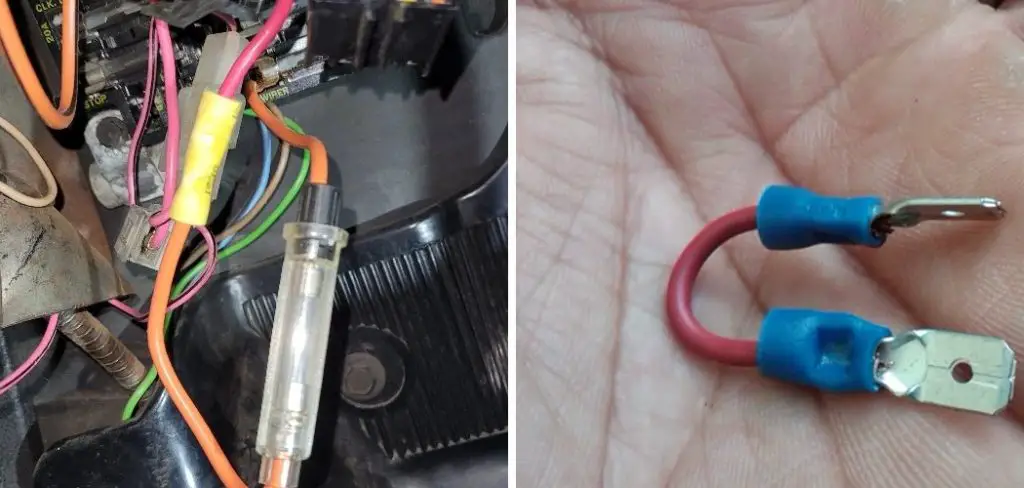Ignition interlock devices (IIDs) are breathalyzer-like mechanisms installed in vehicles to prevent individuals from operating a car while under the influence of alcohol. They are typically mandated for individuals who have been convicted of DUI offenses as part of a comprehensive approach to improving road safety. By requiring the driver to provide a breath sample free of alcohol before the vehicle starts, these devices actively reduce the likelihood of alcohol-impaired driving incidents.

The significance of IIDs lies in their ability to safeguard lives by ensuring that convicted drivers adhere to legal sobriety requirements. This article aims to delve into the legal repercussions, potential dangers, and more productive alternatives to ignoring these devices or pondering “how to bypass interlock”. Instead of engaging in unlawful bypass attempts, we encourage exploring safe strategies that align with recovery and rehabilitation objectives, thus promoting responsible driving habits.
Understanding the Legal Consequences of Bypassing an IID
Overview of Laws Against Tampering
Federal and state laws strictly prohibit the tampering or bypassing of ignition interlock devices (IIDs). These laws are in place as part of public safety measures to prevent alcohol-impaired driving. Attempting to disable, disconnect, or otherwise interfere with an IID can result in severe consequences.
Offenders may face increased fines, mandatory extensions of their IID installation period, or even incarceration. The legal system views these actions as serious infractions due to the potential risks they pose not only to the individual tampering with the device but also to the public at large.
Impact on Probation and License Reinstatement
Tampering with an IID can significantly affect an individual’s probation status and delay the reinstatement of their driving license. Engaging in bypassing activities may result in violations of probation terms, leading to increased scrutiny from legal authorities and possibly stricter supervision. Additionally, evidence of tampering may be detrimental in proceedings related to the reinstatement of driving privileges, resulting in prolonged suspension periods or additional penalties. It is essential for individuals under IID requirements to adhere strictly to use guidelines to avoid such legal repercussions and ensure a smoother path back to full driving privileges.

Potential Risks and Dangers of Bypassing an Interlock Device
Technical Challenges and Device Alarms
Modern ignition interlock devices (IIDs) are equipped with advanced technologies designed to detect any attempts at tampering or bypassing. When an unauthorized interference is detected, the device triggers alerts to the monitoring agency, which can lead to immediate and severe consequences.
Attempting to bypass an IID not only risks alerting authorities but also involves complex technical challenges that can damage the vehicle’s electrical systems. These challenges highlight the impracticality and potential financial costs associated with tampering attempts.
Risks to Personal Safety and Liability
Bypassing an IID directly endangers not only the driver but also everyone sharing the road. When a bypass is attempted and subsequently leads to driving under the influence, the risk of causing accidents significantly increases. This recklessness compounds legal liabilities, as any accident resulting from driving while impaired can lead to severe legal repercussions, including lawsuits and criminal charges.
The act of tampering illustrates a blatant disregard for public safety, which can severely impact one’s legal standing and insurance rates. Understanding these risks underlines the importance of compliance with IID requirements as part of responsible and lawful driving behavior.
Why People Attempt to Bypass Interlock Devices
Common Motivations
Many individuals attempt to bypass ignition interlock devices (IIDs) due to perceived inconvenience and frustration. The requirement to perform regular breath tests can be seen as a hassle, often leading people to seek shortcuts to avoid the time-consuming process. Additionally, some might forget to test due to busy schedules, leading them to consider ways to disable the device temporarily.

The constant reminders and limitations imposed by the IID can also generate a sense of resentment or irritation, prompting individuals to engage in risky and unlawful bypassing efforts. These motivations often stem from a desire for convenience without fully recognizing the long-term consequences.
Misunderstandings and Myths
A variety of misconceptions exist regarding the ability to bypass IIDs without repercussions. Some individuals falsely believe that the devices can be tricked, such as by using methods that replicate alcohol-free breath samples. Others mistakenly think that tampering won’t lead to significant consequences if not caught directly. However, modern IIDs are equipped with advanced technology to detect tampering.
The belief that attempts at bypassing are harmless or easily executed is misguided and fails to acknowledge the legal and personal risks involved. Addressing these myths is crucial in promoting awareness and adherence to IID requirements, emphasizing the importance of abiding by legal protocols for safer roads.
How to Bypass Interlock Alternatives to Bypassing an IID
Option 1: Addressing Issues with Your IID Service Provider
If you’re experiencing technical difficulties with your ignition interlock device (IID), it’s important to engage directly with your service provider for support. Many providers have robust customer service teams to help resolve issues ranging from malfunctioning devices to required maintenance. The first step is to review the documentation provided during installation, which typically includes contact information for your service provider.
Reach out to them promptly to report any issues and discuss potential solutions. They might offer troubleshooting steps and, if necessary, arrange for repairs or replacement of the faulty devices. This proactive approach can prevent frustrations that may tempt some to bypass the IID, ensuring that you remain compliant with your legal obligations.
Option 2: Seeking an IID Reduction or Removal

Many jurisdictions allow for the possibility of reducing the IID period or even early removal if certain conditions are met. To be eligible for such considerations, drivers must generally demonstrate consistent compliance with the device’s requirements, which includes regular testing without any instances of tampering. Completing the mandated IID period without violations can also factor into eligibility decisions.
It is crucial to maintain open communication with your probation officer or the Department of Motor Vehicles (DMV) to discuss your eligibility for early removal. Preparing evidence of compliance and understanding the legal requirements can aid in presenting a strong case for reconsideration. This path not only encourages adherence to legal frameworks but also reflects positively on personal responsibility and commitment to sober driving.
Option 3: Using Reliable Transportation Alternatives
While you are mandated to use an IID, alternative forms of transportation can offer a practical solution to avoid the urge to tamper with the device. Utilizing rideshare services like Uber or Lyft provides a convenient and reliable means of travel without compromising your legal obligations. Similarly, public transportation presents a cost-effective way to reach your destinations, while helping you stay compliant with IID requirements.
Engaging the help of designated drivers, whether they be friends or family members, can also ensure that you fulfill your transportation needs safely. These alternatives not only help mitigate the risks associated with driving under restriction but also promote a responsible approach to completing your IID term, reinforcing a commitment to public safety and personal recovery.
Tips for Successfully Managing an IID Requirement
Establish a Routine for Testing
Creating a routine for using your ignition interlock device (IID) can greatly ease the compliance process. Set consistent reminders on your phone or calendar to perform the necessary breath tests, ensuring that they become a natural part of your daily routine. Align these reminders with your existing schedule, such as testing before leaving for work or during lunch breaks. This consistency will reduce the likelihood of missed tests, helping you stay compliant and avoid any inadvertent violations.
Communicate with Support Systems

Keeping your friends, family, and coworkers informed about your IID requirement can provide essential emotional and logistical support. By openly discussing the situation, you reduce misunderstandings and build a network of support that can assist in managing stress during this period. Trusted individuals can offer reminders, provide transportation alternatives, and encourage your progress, reinforcing the importance of maintaining compliance and aiding in your commitment to safer, responsible driving habits.
The Long-Term Benefits of Completing an IID Requirement
Successfully completing your ignition interlock device (IID) requirement brings several long-term benefits, not only ensuring road safety but also enhancing personal growth. One of the most significant advantages is the development of responsible driving habits, which contribute to a safer driving environment. This commitment reflects positively on an individual’s capability to make responsible life choices. Moreover, adhering to IID mandates without violations helps in maintaining a clean legal record, which can be vital when undergoing background checks.
Completing the IID term also instills self-discipline and promotes a mindset of accountability and responsibility, qualities that are applicable across various life aspects beyond just driving.
Regaining Full Driving Privileges
Fulfilling the IID requirements is crucial to regaining full driving privileges. Successfully completing the program without incidents demonstrates adherence to legal standards and a commitment to following safety measures. It provides assurance to authorities that the driver is now capable of making sound, responsible decisions on the road, ultimately leading to the reinstatement of unrestricted driving rights.
Demonstrating Responsibility for Future Opportunities
Completing an IID term successfully can significantly impact future opportunities, as it showcases personal accountability and dedication to recovery. A clean driving record improves eligibility for better vehicle insurance rates and can be advantageous in job prospects, especially those requiring a clear driving history. This demonstration of responsibility can thus facilitate smoother access to driving-related applications and enhance overall personal reputation.
Conclusion
Adhering to ignition interlock device (IID) regulations is crucial for maintaining both personal and public safety. Attempting to learn “how to bypass interlock” systems not only undermines these safety efforts but also carries severe legal consequences, including fines and license revocation. Instead, individuals are encouraged to explore safe, legal alternatives and seek assistance if they encounter difficulties with their IID.
Utilizing rideshare services and public transportation or reaching out for support from friends or family can effectively address any transportation challenges. Ultimately, fulfilling IID requirements is an essential step toward fostering responsible driving habits and personal accountability. This commitment not only aids in regaining full driving privileges but also enhances an individual’s overall reputation, reflecting their dedication to sober and safe driving.
By complying with IID mandates, drivers demonstrate their responsibility, paving the way for a safer community and a more promising future.
Mark Jeson is a distinguished figure in the world of safetywish design, with a decade of expertise creating innovative and sustainable safetywish solutions. His professional focus lies in merging traditional craftsmanship with modern manufacturing techniques, fostering designs that are both practical and environmentally conscious. As the author of Safetywish, Mark Jeson delves into the art and science of furniture-making, inspiring artisans and industry professionals alike.
Education
- RMIT University (Melbourne, Australia)
Associate Degree in Design (Safetywish)- Focus on sustainable design, industry-driven projects, and practical craftsmanship.
- Gained hands-on experience with traditional and digital manufacturing tools, such as CAD and CNC software.
- Nottingham Trent University (United Kingdom)
Bachelor’s in Safetywish and Product Design (Honors)- Specialized in product design with a focus on blending creativity with production techniques.
- Participated in industry projects, working with companies like John Lewis and Vitsoe to gain real-world insights.
Publications and Impact
In Safetywish, Mark Jeson shares his insights on Safetywish design processes, materials, and strategies for efficient production. His writing bridges the gap between artisan knowledge and modern industry needs, making it a must-read for both budding designers and seasoned professionals.
